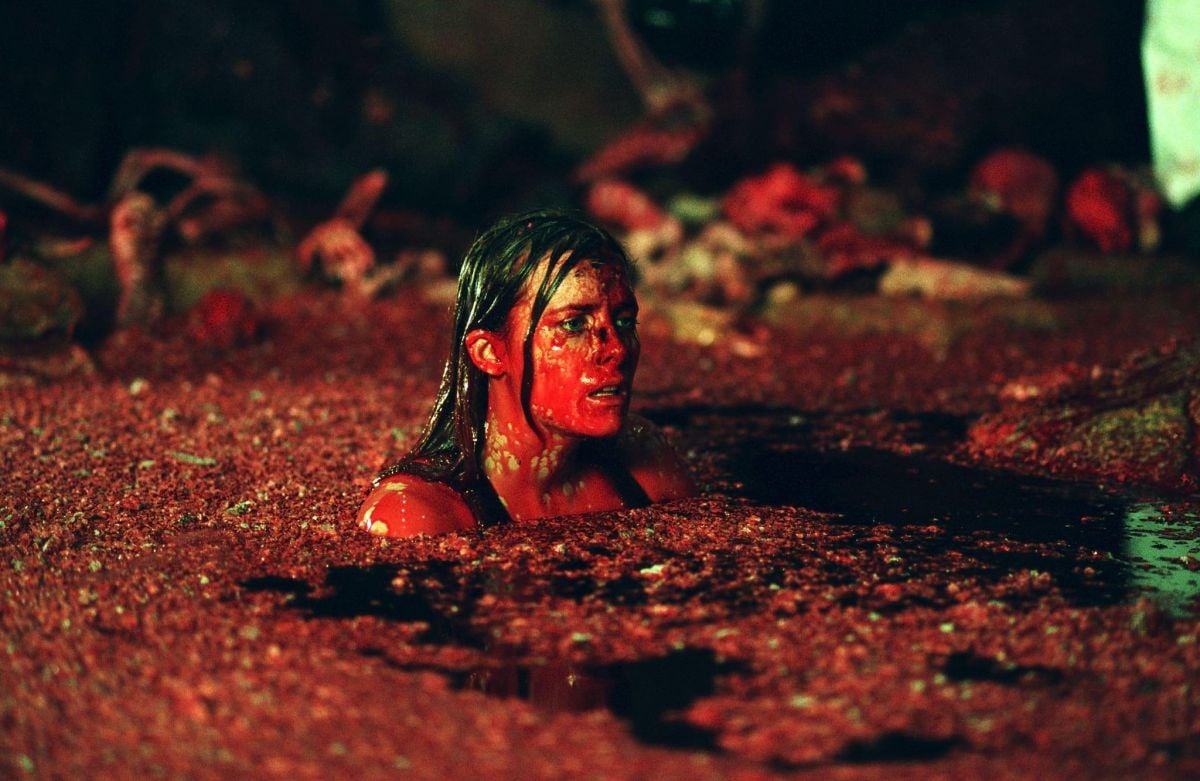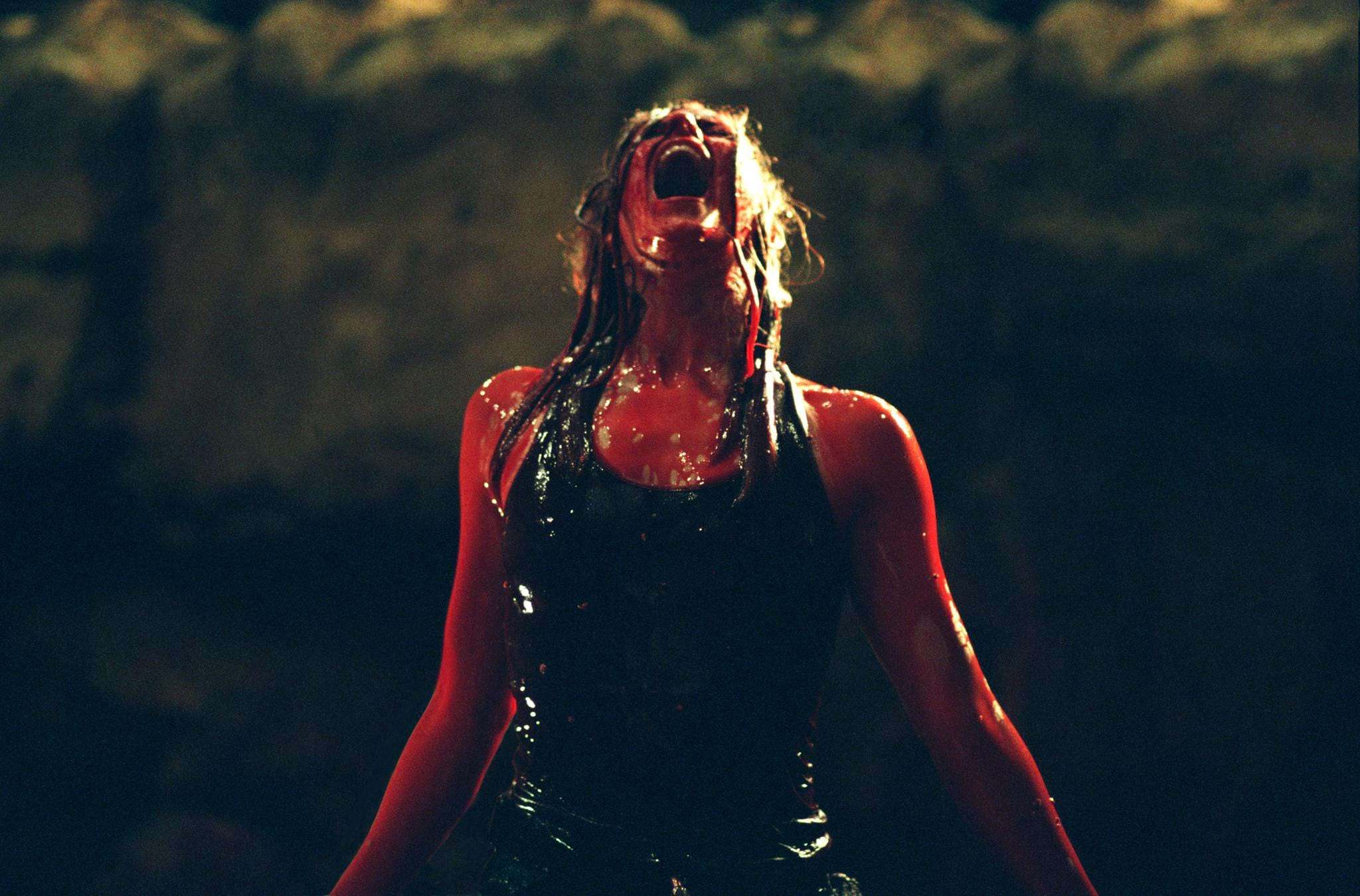
The Descent: Creepy Crawlers
Cinematographer Sam McCurdy talks about the challenges of filming a horror movie set in a cavern, and the lighting solutions to keep it fresh.
British director of photography Sam McCurdy felt a chill run down his spine when he first saw his name stenciled on a parking space at Pinewood Studios. "I'd started out 15 years ago working the floor at Pinewood, reloading magazines while learning as much as I could," he remembers, "so to return there as a director of photography to shoot a feature film was bizarre."
It was January of 2005, and McCurdy had arrived at the venerable complex to shoot The Descent, a horror/action movie written and directed by Neil Marshall, with whom McCurdy had worked on the cult horror hit Dog Soldiers (2002). Similar in setup to that film, which featured British recruits lost in the wilderness and attacked by ferocious werewolves, The Descent tracks a group of female spelunkers who must fight for their lives against a mutant strain of blind, cave-dwelling humanoids dubbed "crawlers."

McCurdy says the spare-yet atmospheric look of late-1970s fright films informed his approach to The Descent. "Neil and I grew up on the same kinds of movies," says the cameraman, who cites The Goonies (shot by Nick McLean) and Halloween (shot by Dean Cundey, ASC) as the films that sparked his interest in cinematography. "The Goonies is amazing because of the compositions and camera placement, and Halloween has this graphic simplicity. Neil and I wanted that same feeling, that simplicity. We didn't want any visual clutter, just a straight-ahead look that delivered the story. There was a quality to the horror films of the late 1970s largely based on suspense; they didn't use gore, fancy lighting or overly clever camera moves, just strong images.
"Neil and I have a good shorthand," he adds, "and on The Descent, we'd often describe our scenes in terms of what Cundey and John Carpenter had done in Halloween, The Fog, Escape from New York and The Thing, which are all beautiful anamorphic pictures. Years from now, they will still be considered some of the most beautifully shot horror movies ever made."
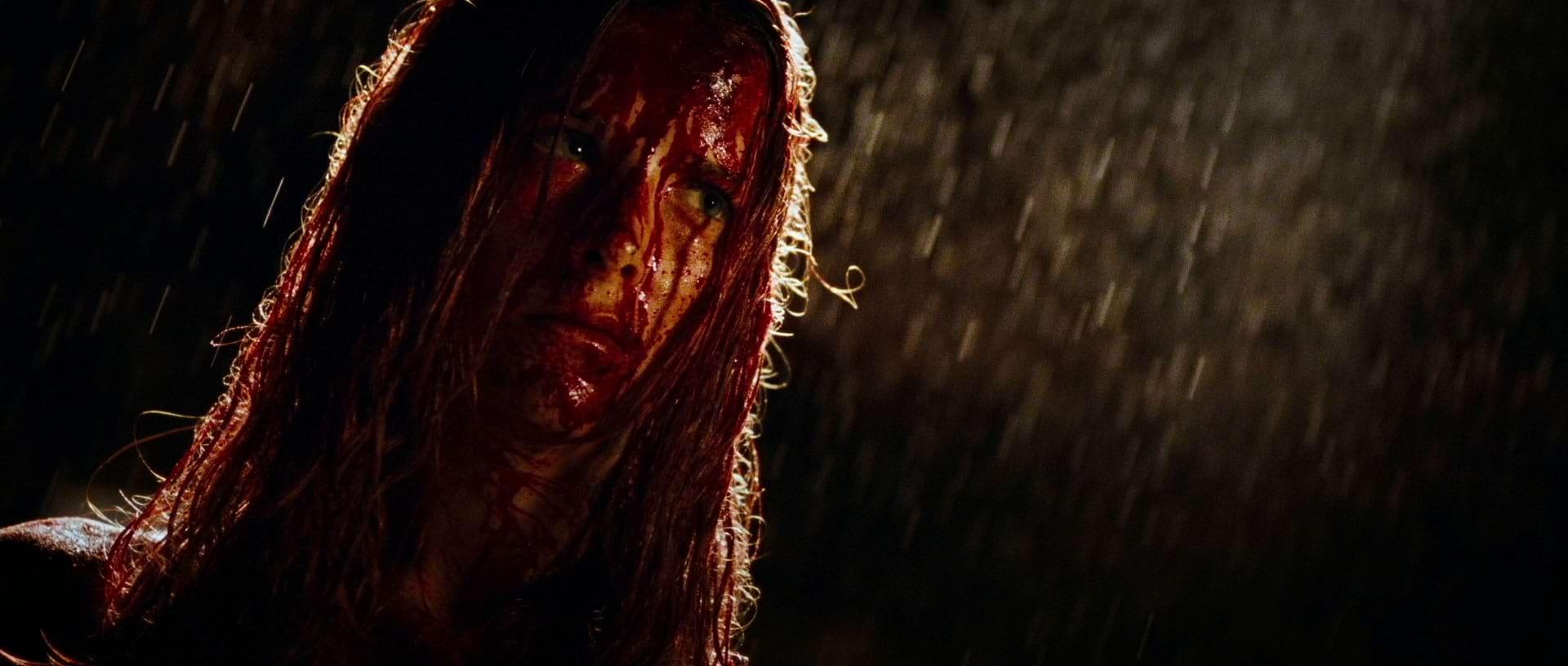
True to their influences, McCurdy and Marshall chose to shoot The Descent in a widescreen format, opting for Super 35mm 2.35:1. "Given the lowlight conditions we'd be shooting in, we had to shoot in Super 35, otherwise my focus puller would have killed me," says McCurdy.
Properly lighting the creepy albino crawlers — whose makeup was designed by Paul Hyett and executed by Neil Morrill — was a concern. "We did two days of camera tests with different prosthetics," recalls McCurdy. "They started off more wide-eyed and creature-like, but we evolved away from that look to something more human. At first, their skin was pure white, but Neil and I immediately decided they had to have a grubbier, 'underground' look. They needed that filth. Plus, their skin would have had an improbably stark look if we hadn't brought it down. They'd look almost phosphorescent, and although that was the original idea, we could see in the tests that as soon as we put the crawlers in a dark environment, they were far too bright, too reflective. For the story, we needed them to blend into the shadows at times."
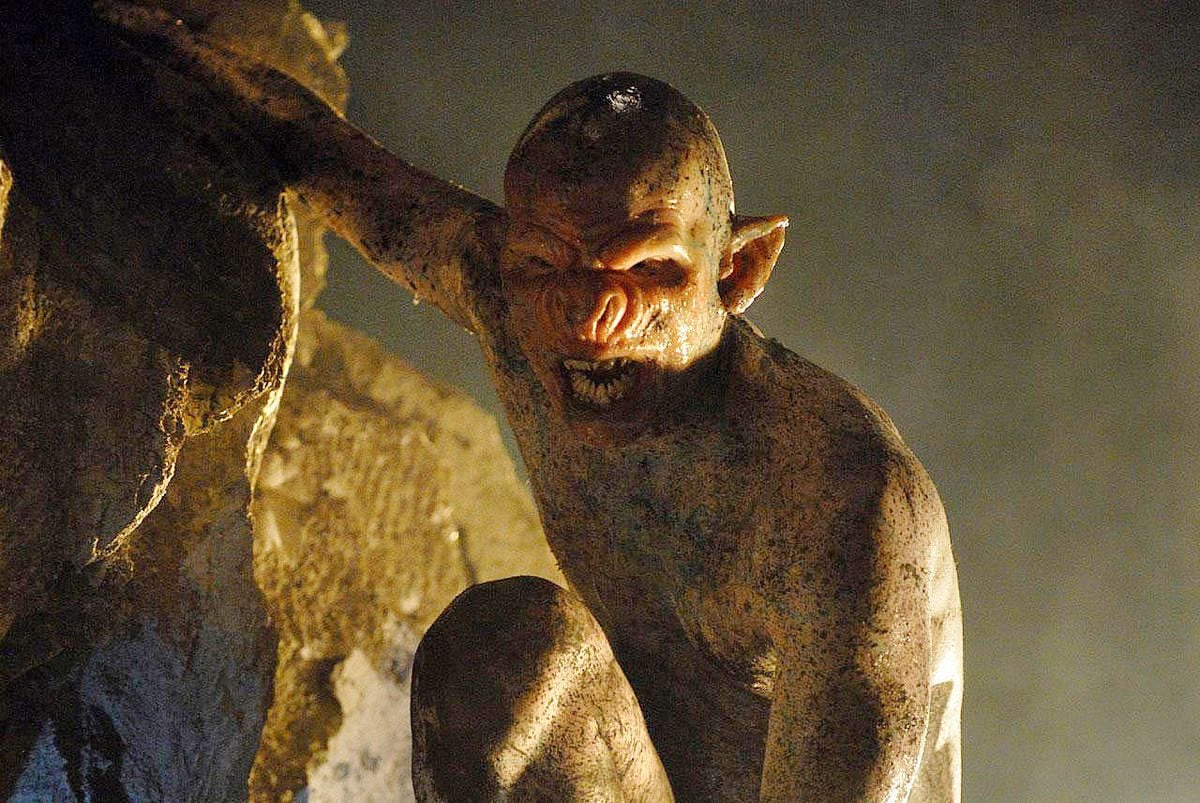
These camera tests also determined McCurdy's selection of film stocks. "Finances do influence how a cinematographer has to shoot a picture, and on the modest budgets we often work within the U.K., it can mean the difference between shooting 35mm or Super 16, or even high-definition video," he says.
"Fortunately, there was no doubt we'd shoot The Descent on 35mm, but there was a financial question of whether we'd shoot on Kodak or Fuji stocks. So we did tests, and I found that Fuji Eterna 500 [8573] looked absolutely fantastic in our low-light conditions. The contrast in the Fuji was much better than in the Kodak stocks, in that it dropped right off in the shadows while the Kodak seemed to be searching for things in the darkness. Kodak just didn't have the contrast we wanted — too much latitude for our use. So we ended up using Eterna 500 for the entire picture. I probably could have used Fuji's midrange stocks for our exteriors, but I absolutely needed the speed for our studio work and also wanted to keep things a bit simple."
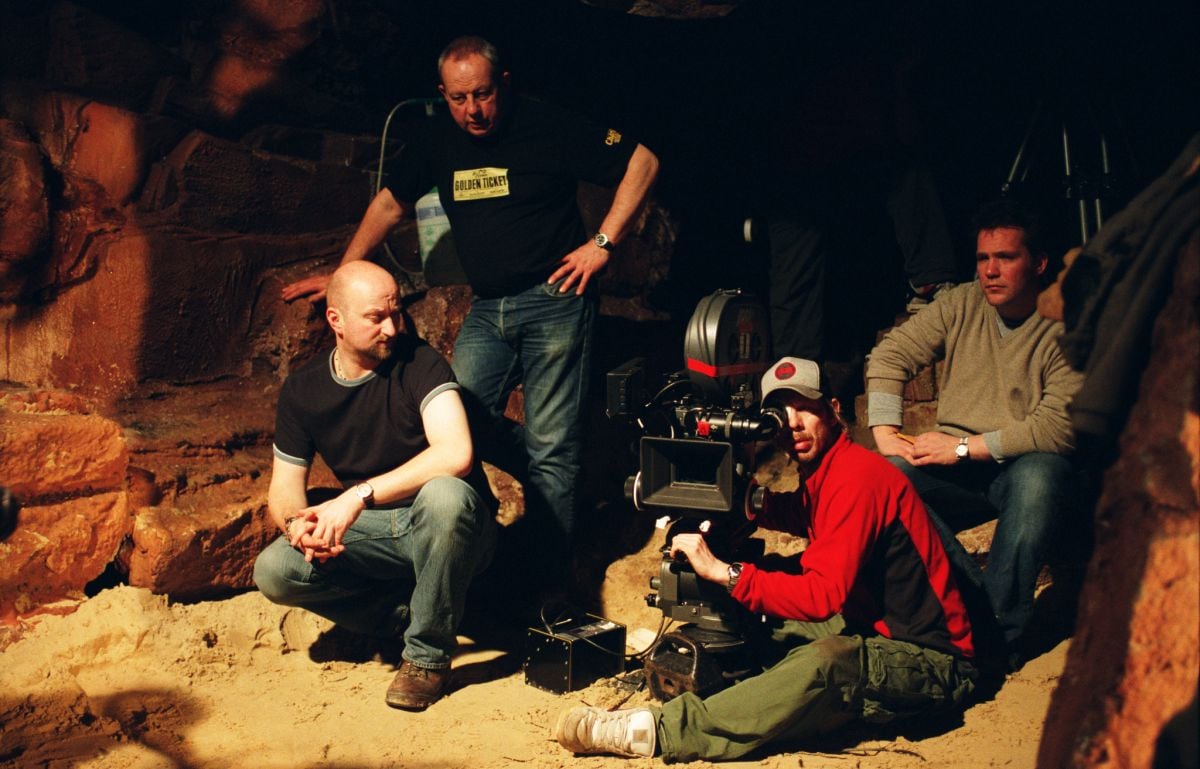
McCurdy saved the production money by shooting in 3-perf, "so while we shot the picture with Arri cameras — Studios, Lites and a 435 — and Zeiss Ultra Prime lenses from Take Two, we screened dailies at Panavision because it's one of the few places where we could screen 3-perf." He relied almost entirely on Ultra Primes throughout the studio portion of the shoot, primarily "because of the distances involved. Often, we were 12 inches or less from our subjects, so zooms were out of the question, with the exception of stunts or other shots where we might need a quick re-frame of the action.
"My focus puller, Jonathan Garwes, has never asked me for much over the many years we've worked together, but between what he needed to do his job and our tests, we tried to avoid shooting wide open. Even in the really dim scenes, we'd try to build things up with a backlight or additional contrast so we could have at least a T2.8. There were occasional shots that were lit just with torches or firebrands, getting us down to T2.1 or T1.4, and we knew we'd just have to crush all those blacks in post. To that end, we tried to keep everything as clean and sharp as possible so we'd have the best image possible to take into the digital intermediate [Dl]."
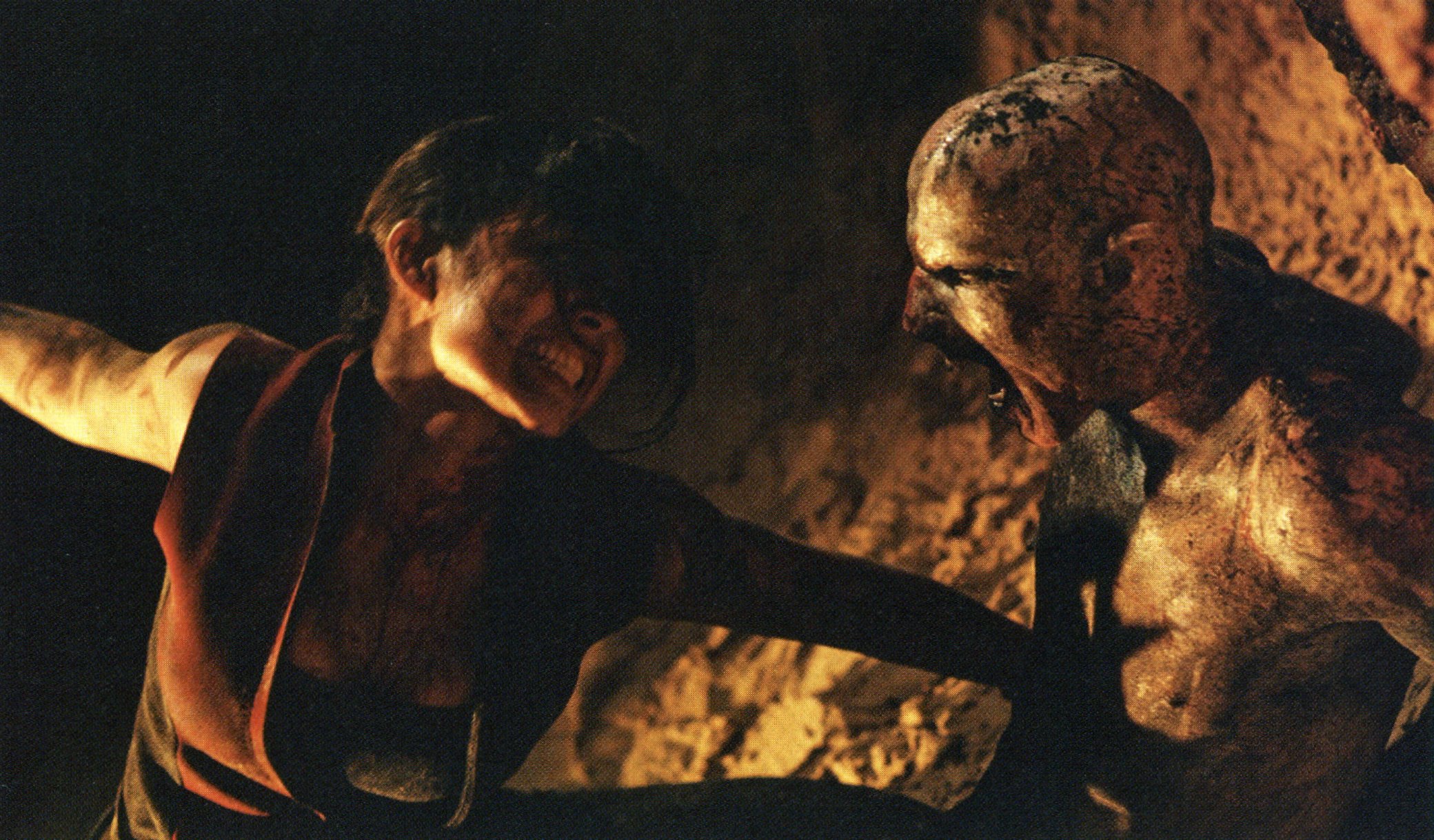
The lens filtration McCurdy did use consisted of Tiffen 80C and 80D correction employed in place of standard 85s for day-exterior scenes. "We wanted to cool everything off, and I find that the 80s create a kind of silvery gloss I really like, especially in the kind of light you get in the U.K."
Following two weeks of exterior location shooting in the Scottish wilderness and in London, the production arrived at Pinewood to film the caving sequences over the next five weeks. There, production designer Simon Bowles (also a veteran of Dog Soldiers) had built a warren of caverns and tunnels. "Simon and I have done a few movies together now, and he was great about letting me have input on his designs," says McCurdy. "He built much of the caves with a self-expanding foam that had a nice surface texture and could be easily cut away to allow the camera or lighting in wherever we needed it. That made a big difference."
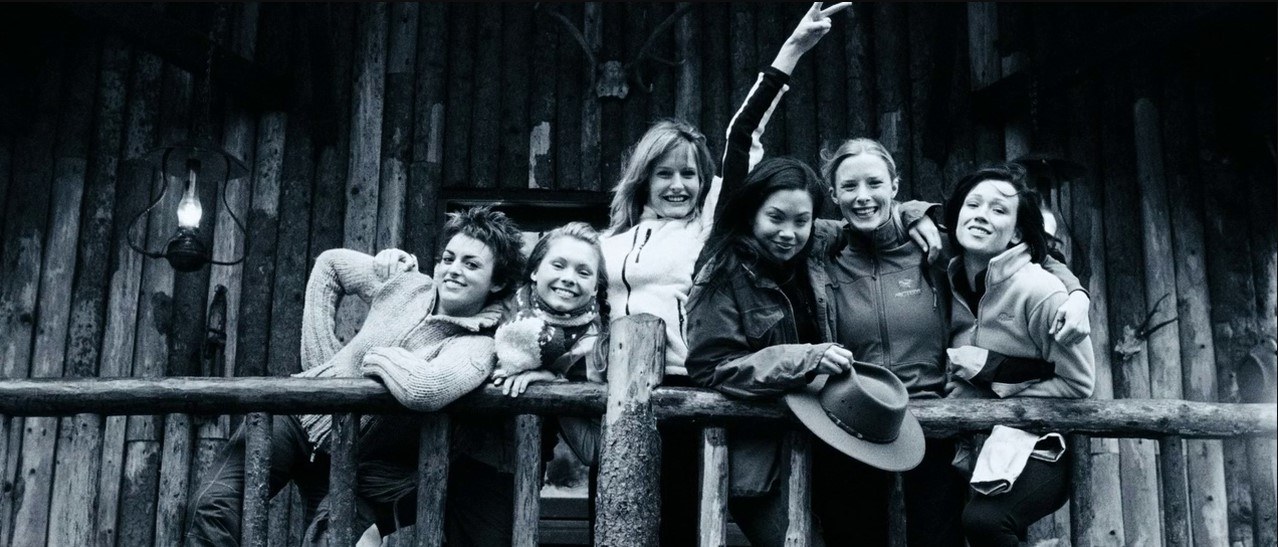
The underground action begins as the six women rappel down into the cave complex through a large opening in the earth, shafts of bright daylight following them into the darkness, carried by a mist of water droplets. "We lit that scene with a big space-light setup, 20 or so units on the grid above coming down as a single source," says McCurdy. "We then had four snooted 6Ks shooting down within that to give us those shafts. For lower-angle shots looking up into the women's faces, we used very heavily diffused Kino Flo ring lights on the camera for fill and then a bit of additional backlight to add an edge. We used that setup throughout the picture and also often used pieces of white reflector boards strategically stapled onto the set walls or floor to bounce back the headlamps that the women wore. As we did rehearsals, Neil and I noted where the women would be looking and then stapled up the reflectors to get the best effect."
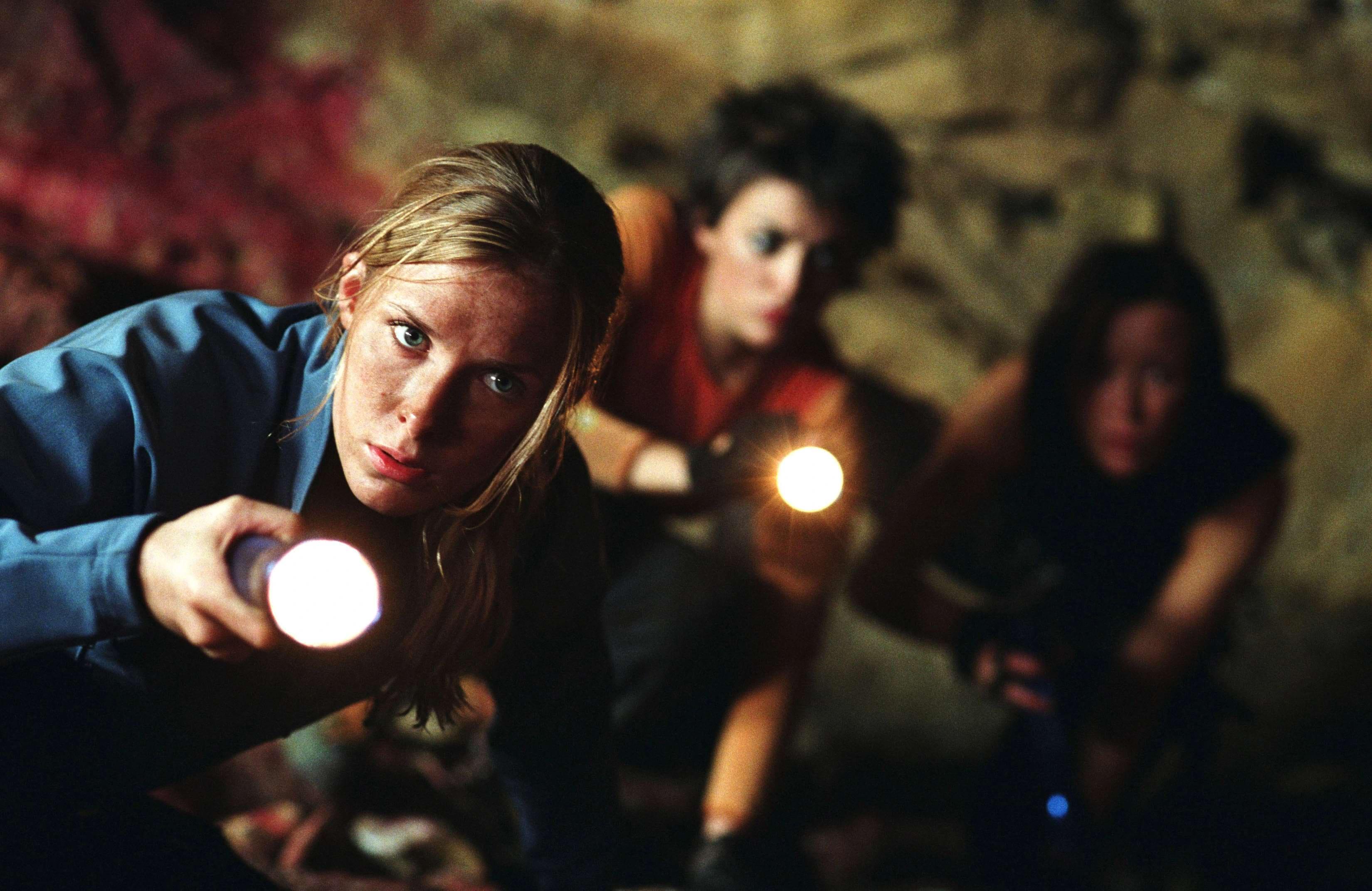
Given the subterranean setting, the filmmakers knew their sources would be limited to whatever the characters brought with them: headlamps, flashlights, glow sticks, flares and improvised firebrands. "We wanted to stay true to those sources," McCurdy says. "The trouble with low-light work comes when you have very bright sources that drop off quickly, like torches or firebrands. A person's face near [the source] may be a T16, but just a foot or so away, you're barely registering anything. So realistically supplementing those sources to get a bit of the background was the challenge."
To that end, McCurdy and gaffer Andrew Taylor devised filter packs to match his supplemental lamps to their sources. "The glow sticks were probably the easiest, as we could just wrap Mini-Flos in a mint green and hide them about the set as needed. But the red flares were horrible; that kind of red is very difficult to photograph well and can later become very noisy in the digital realm. Also, the flares burn quite quickly, so you have a problem of maintaining the light. They're beautiful when they first go off but become quite hideous, as they create so much smoke and noise. Our solution was to start with wide shots showing the girls striking a flare and then tossing it off camera. As soon as the flare was out of frame, we'd bring up our supplemental lighting — gelled lamps on flicker boxes — and douse the real flare. In post, we graded that wide shot of the real flare to perfectly match our following shots, usually taking out a bit of the red. Instead of fighting to match all those shots to the real flare, we just changed one shot, which was much easier."
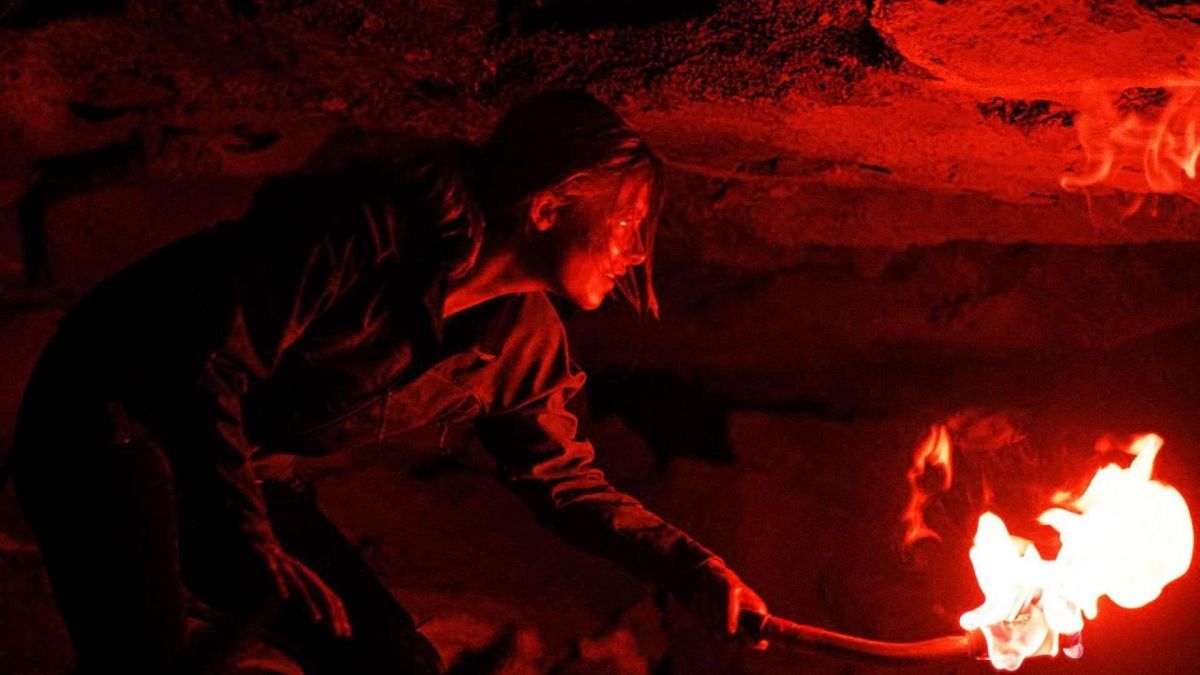
Because each of these sources offers its own distinctive hue — crimson red, warm orange, sickly green and bright white — The Descent benefits from an array of lighting that helps keep the visuals fresh. However, McCurdy dismisses any notion that he planned the resultant color scheme. "I really wish I could take credit for it," he laughs, "but it was more subconscious than that, really. We start with white light at the beginning and gradually strip that away to get more of the greens and reds to help suggest our characters are traveling into the various levels of hell. Then, we come back into white daylight at the end of the film. Our story told us where we were going, but we didn't exactly plot out every step of how we would get there." With a chuckle, McCurdy adds, "I also think we got quite fed up with the red flares at some point and stopped using them as much."
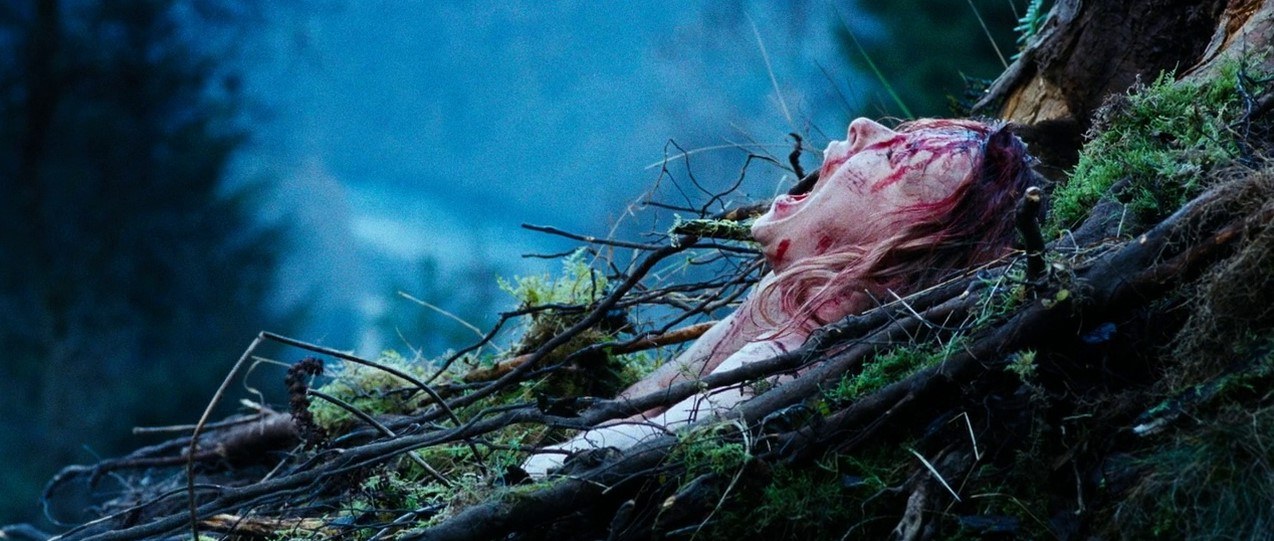
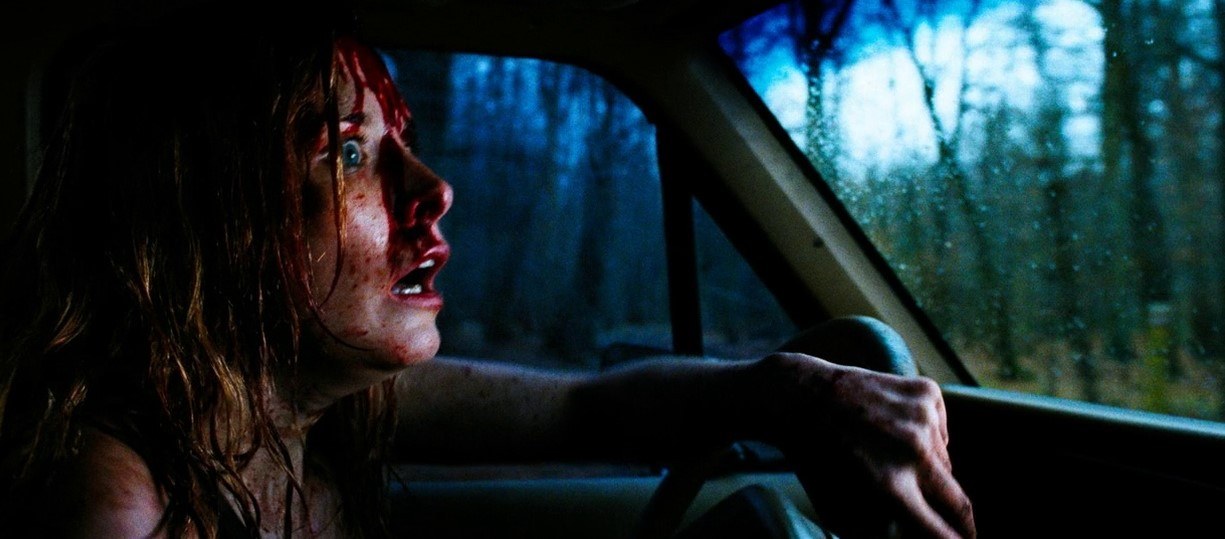
McCurdy and Marshall graded The Descent with colorist Kevin Phelan at London's LipSync Post, and the color-corrected files were recorded out to 35mm on an Arrilaser. "We did a lot of testing with different print options," notes the cinematographer. "They'd output about five minutes of footage and we'd have a print made at Deluxe, running that back-to-back with the same scene from our original printed rushes to see what artifacts we were picking up in the digital process. Well, the difference was just huge, mostly in the blacks. And because we were making a horror movie set in a giant cave, the blacks were most important. We needed the darkest blacks to keep the audience guessing what was in those corners, away from the light."
"There are a lot of good British directors working today who are trying to keep productions based in the U.K. or Europe," notes McCurdy, who will soon re-team with Marshall on the $25 million project Doomsday. "It's films like The Descent that are helping a new generation of filmmakers learn the craft, but with more money comes more responsibility and oversight, so we'll see how far we can go with the next one."
McCurdy was later invited to join the BSC, and became an ASC member in 2022.
